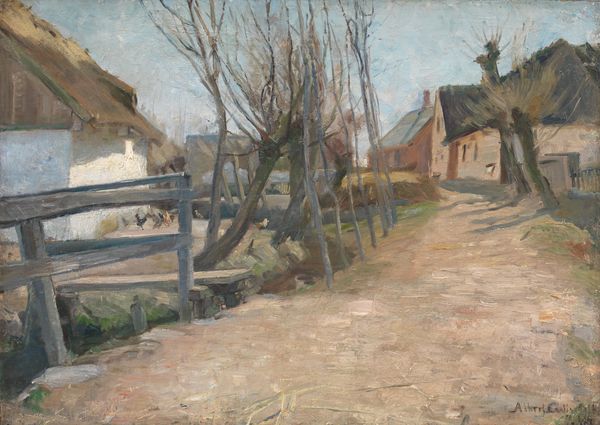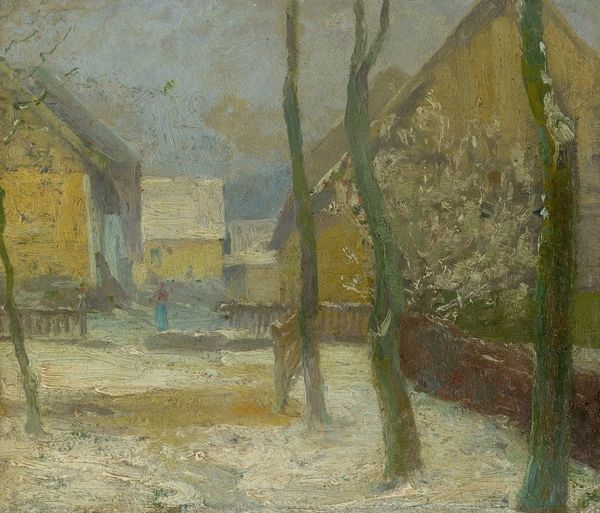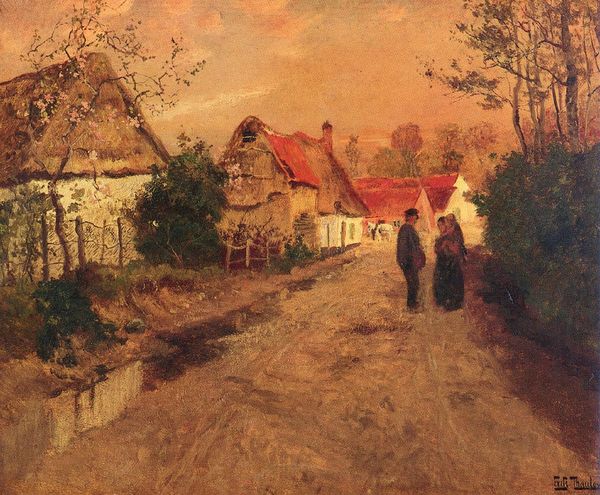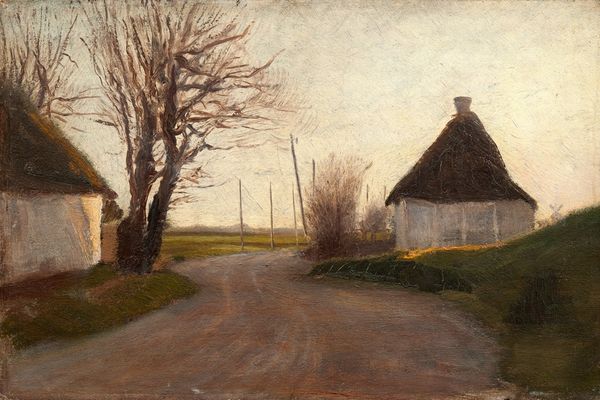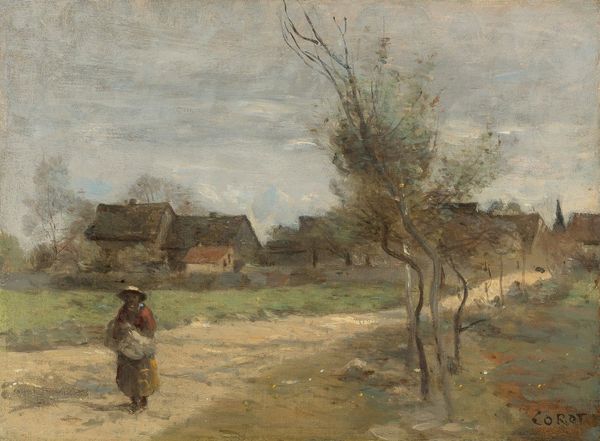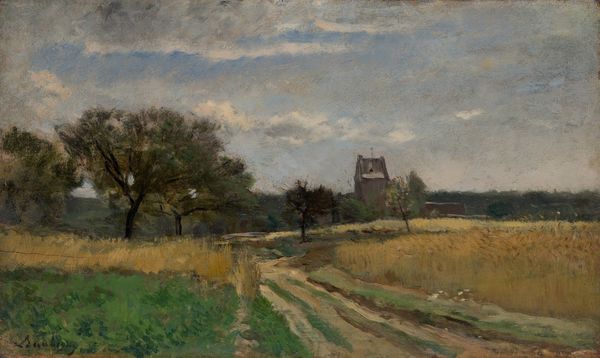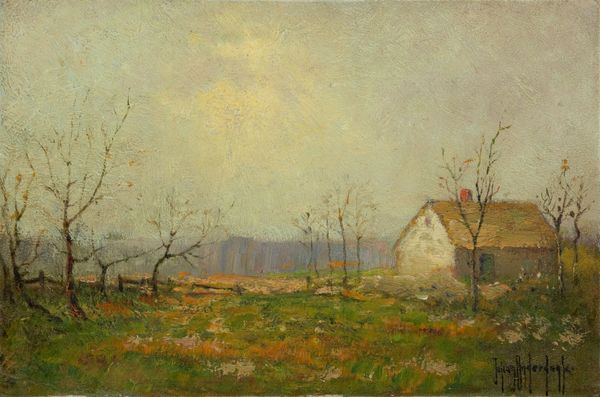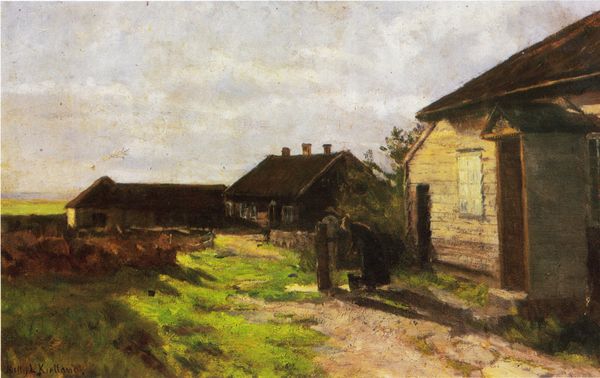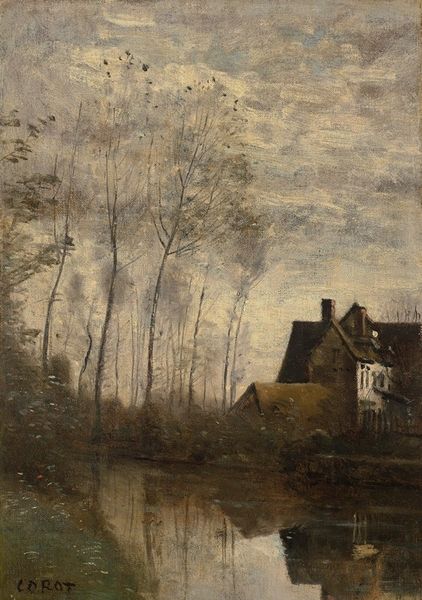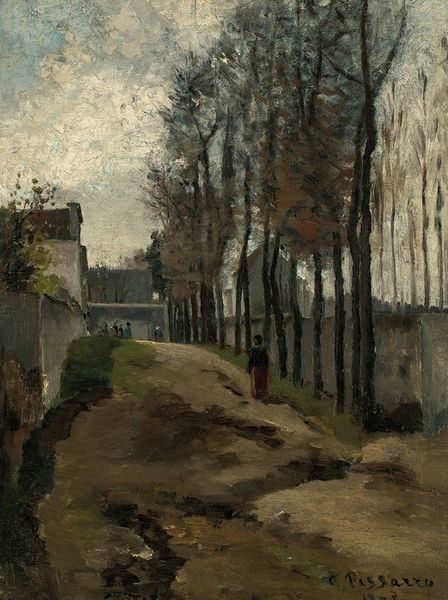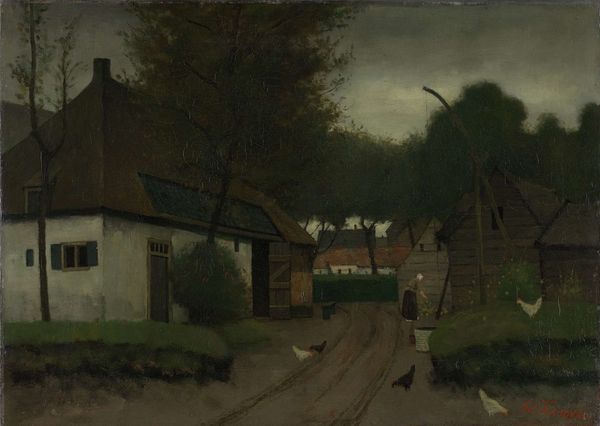
painting, plein-air, oil-paint
#
dutch-golden-age
#
painting
#
impressionism
#
plein-air
#
oil-paint
#
landscape
#
genre-painting
#
realism
Dimensions: height 17.5 cm, width 24 cm, thickness 0.6 cm, depth 8.2 cm
Copyright: Rijks Museum: Open Domain
Curator: "Boerenhuis aan een vaart," or "Farmhouse on a Canal," painted by Johan Hendrik Weissenbruch, likely sometime between 1870 and 1903. It's an oil on canvas, exhibiting that subtle coloration so particular to his landscapes. Editor: My first impression is quiet solitude. The subdued palette, dominated by grays and browns, certainly evokes a sense of peaceful isolation. But what strikes me most is the emphasis on the textural—that rough thatch roof, the aged wood. It speaks to me about the humble existence of the people inhabiting it, wouldn’t you agree? Curator: Precisely! Weissenbruch’s works like this elevate the everyday labor within this landscape. It presents a sort of glorification, by looking directly into the humble. We can even get an even better view to it, since its creation followed the new possibility of mixing the paint with oil. Editor: The placement of the woman performing her daily task creates a direct link with the symbolism of work that you are mentioning, she’s outside the house taking advantage of the river. What do you think of the bench seat, to the left. This element does contribute also to the scene don't you think? Curator: Yes, notice how the lines of the seat almost mirror the architecture behind it—it feels constructed to create that feeling with its rigid symmetry, I feel. In regards to this topic, it might provide some form of narrative, that is to be found behind the process to get this structure builded. Editor: And within that context, I am seeing symbols of stability—the house itself with its small window becomes the family protector, or container if you wish, even from the most chaotic conditions that nature may apply to it. I also like how he contrasted those sturdy man-made aspects to the ethereal nature surrounding. Curator: Weissenbruch seems focused on a raw depiction and, while your interpretation through iconography does seem valid and sound, the importance in here might relate also to an earlier period with realism, trying to portray in this intimate image also a form of modern narrative for its own artistic trajectory. Editor: Well, delving into this landscape definitely sheds light on how Weissenbruch intertwined material reality with symbolic weight. I am now starting to see with new eyes into all of his landscape depictions and how that impacts society nowadays, great artwork truly! Curator: Indeed! Reflecting on this artwork from production of materials or an art made with care gives insights on artistic development of its narrative across different cultures—revealing that continuous interplay between culture and expression that you are so adamant of.
Comments
No comments
Be the first to comment and join the conversation on the ultimate creative platform.
